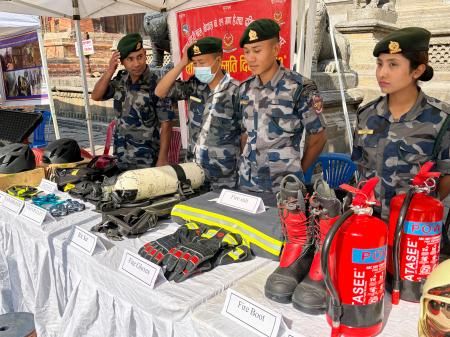Ten Years On: Nepal's Earthquake Legacy – Resilience, Reconstruction, and Remaining Challenges
A decade after the devastating 2015 earthquake, Nepal continues its journey of recovery, showcasing remarkable resilience while grappling with persistent challenges. The 7.8 magnitude earthquake and subsequent aftershocks left an indelible mark on the nation, claiming thousands of lives and causing widespread destruction. This article explores the progress made, the hurdles overcome, and the ongoing efforts to build a more resilient Nepal.
The Scars Remain: Remembering the 2015 Earthquake
The April 25th, 2015, earthquake remains a poignant memory for Nepal. The catastrophic event triggered landslides, collapsing buildings, and widespread devastation, particularly in Kathmandu and surrounding areas. The immediate aftermath was chaotic, with a desperate need for rescue efforts, medical assistance, and emergency supplies. The human cost was staggering, with over 9,000 lives lost and countless more injured. The UNESCO World Heritage sites of Kathmandu Valley, including Boudhanath Stupa and Pashupatinath Temple, suffered significant damage, highlighting the earthquake's impact on Nepal's cultural heritage.
Key Impacts of the 2015 Earthquake:
- Loss of life and displacement: Thousands perished, and hundreds of thousands were left homeless.
- Infrastructure damage: Schools, hospitals, and critical infrastructure were severely damaged or destroyed.
- Economic disruption: The earthquake dealt a significant blow to Nepal's already fragile economy.
- Psychological trauma: The earthquake left a lasting psychological impact on survivors.
- Damage to cultural heritage sites: Iconic temples and monuments suffered significant damage.
A Decade of Reconstruction: Progress and Setbacks
The international community responded swiftly with aid and support. Billions of dollars were pledged for reconstruction efforts, focusing on rebuilding homes, schools, hospitals, and cultural heritage sites. While significant progress has been made, the process has been slow and fraught with challenges.
Key Achievements in Reconstruction:
- Housing reconstruction: Many homes have been rebuilt, albeit at a slower pace than initially hoped.
- School reconstruction: A substantial number of schools have been rebuilt or repaired, improving access to education.
- Improved building codes: New building codes have been implemented to enhance earthquake resilience.
- Enhanced disaster preparedness: Nepal has invested in improving disaster preparedness and response mechanisms.
Ongoing Challenges:
- Slow disbursement of funds: Bureaucracy and logistical hurdles have hampered the efficient allocation of aid.
- Corruption and mismanagement: Concerns remain about transparency and accountability in the reconstruction process.
- Lack of skilled labor: The sheer scale of the reconstruction effort has created a shortage of skilled workers.
- Geographic challenges: Reaching remote and mountainous areas has proven difficult and costly.
- Addressing the psychological impact: Long-term mental health support for survivors remains crucial.
Building a More Resilient Future: Lessons Learned and Future Outlook
The 2015 earthquake served as a stark reminder of Nepal's vulnerability to natural disasters. The decade since has been a testament to the country's resilience, but also highlighted the need for long-term sustainable development and disaster risk reduction strategies.
Key aspects for future resilience:
- Investing in infrastructure resilience: Building earthquake-resistant infrastructure is paramount.
- Strengthening governance and transparency: Accountability and efficient resource management are crucial.
- Community engagement: Involving local communities in the planning and implementation of reconstruction projects is essential.
- Improved early warning systems: Investing in advanced early warning systems can save lives and mitigate damage.
- Focusing on sustainable development: Promoting sustainable practices can reduce vulnerability to future disasters.
Nepal's journey of recovery from the 2015 earthquake is a complex and ongoing process. While significant progress has been made, the challenges remain substantial. By learning from the past and investing in a more resilient future, Nepal can build back stronger and better prepared for future disasters.
Call to Action: Learn more about organizations supporting Nepal's ongoing recovery efforts and consider contributing to their work. [Link to relevant organizations].
